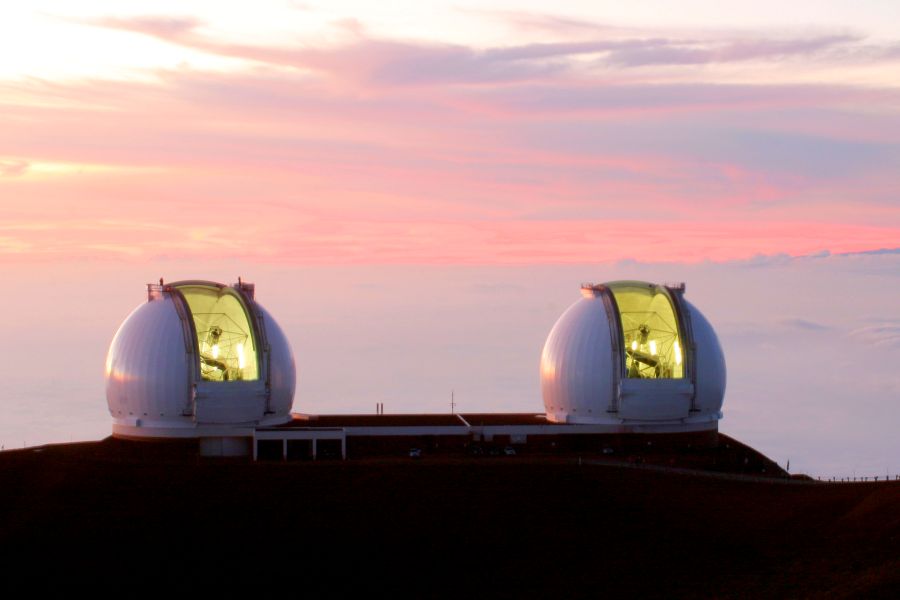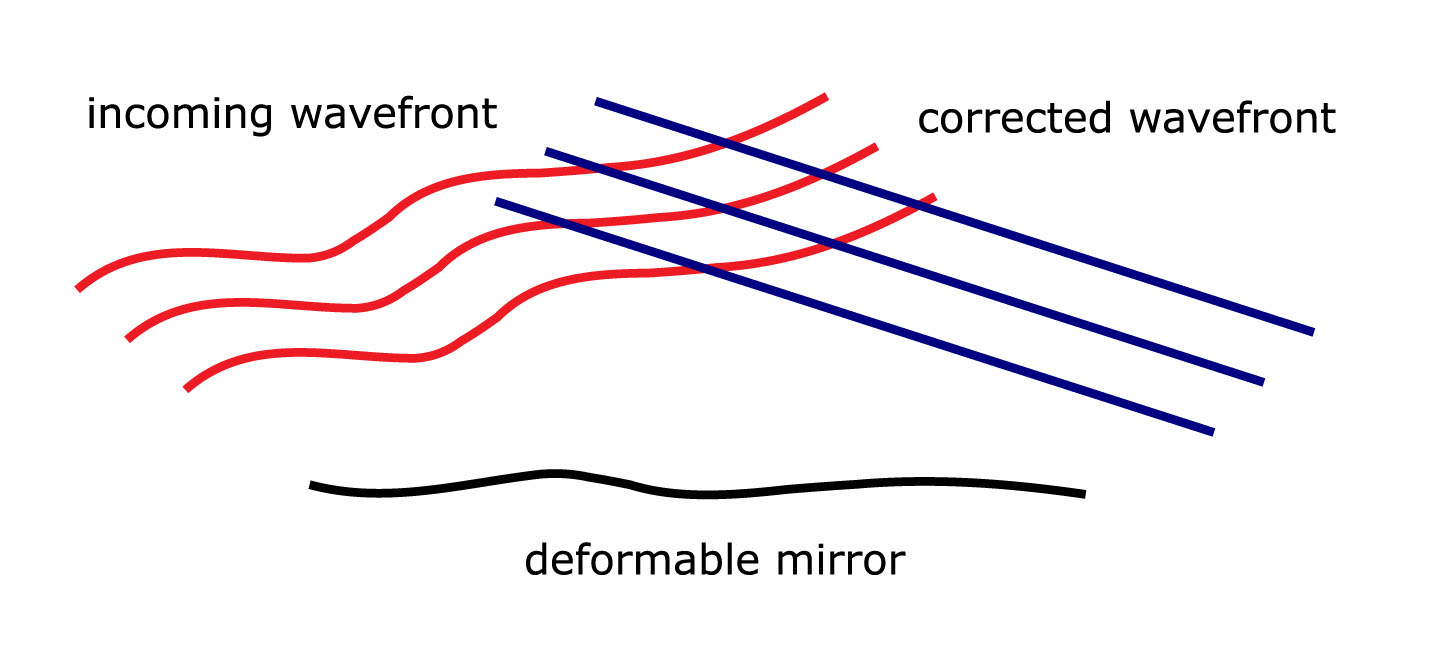5.2: High-Resolution Astronomy
( \newcommand{\kernel}{\mathrm{null}\,}\)
The atmosphere is the bane of astronomers. Cloudy nights, temperature variations, and wind currents create distortions that limit the overall resolution of a telescope. On top of that, they must contend with light pollution from nearby cities which limit their light-gathering power.
One solution is to put telescopes in space. Indeed, for wavelengths that do not penetrate the atmosphere, such as ultraviolet, x-rays, and some infrared frequencies, that is the only way to make observations in those bands. However, launching a telescope is expensive and subject to delays. Also, with the retirement of the space shuttle, servicing and maintaining space-based telescopes is difficult. We will talk about space-based telescopes in Section 5.3, but for now, we will talk about ways to improve resolution for ground-based astronomy.
Following the old real estate maxim of “location, location, location,” one way to improve telescope resolution is by choosing a good location. The ideal location should be a place that is:
1. calm (not too windy)
2. high (less atmosphere to see through)
3. dark (far from city lights)
4. dry (few cloudy nights)
The best observing sites are atop remote mountains, especially in desert regions. In the Northern Hemisphere, one popular location is Mount Mauna Kea, the tallest mountain in Hawaii. High above the cloud layer Mauna Kea affords an excellent location for seeing and researchers from several countries have built observatories there. In the Southern hemisphere, several nations have built observatories in the Atacama Desert in Chile, a mountainous region and one of the driest places on Earth.
 The Keck Observatory in Hawaii
The Keck Observatory in Hawaii
https:/commons.wikimedia.org/wiki/File:KeckObservatory20071020.jpg;
Even at these elevations, some atmospheric distortion is still inevitable. To contend with this, astronomers at the Keck Observatory in Mauna Kea have perfected the use of adaptive optics. By focusing on a bright star close to the object they wish to observe, computers operating tiny motors distort the mirror to perform real-time corrections to compensate for atmospheric distortion. If no convenient bright can be found near the object of interest, astronomers can use lasers to excite sodium atoms in the upper atmosphere to create artificial guide stars to calibrate their mirror distortions. Modern adaptive optics techniques have been able to produce resolutions equal to or even greater than that achieved by the orbiting Hubble Telescope.
 A Deformable mirror can be used to correct for atmospheric distortion.
A Deformable mirror can be used to correct for atmospheric distortion.
 Principle of Adaptive Optics.
Principle of Adaptive Optics.
.jpg?revision=1&size=bestfit&width=550&height=550) The Extremely Large Telescope is designed to use adaptive optics.
The Extremely Large Telescope is designed to use adaptive optics.
https:/commons.wikimedia.org/wiki/File:ELT_adaptive_optics_(34873921940).jpg;





